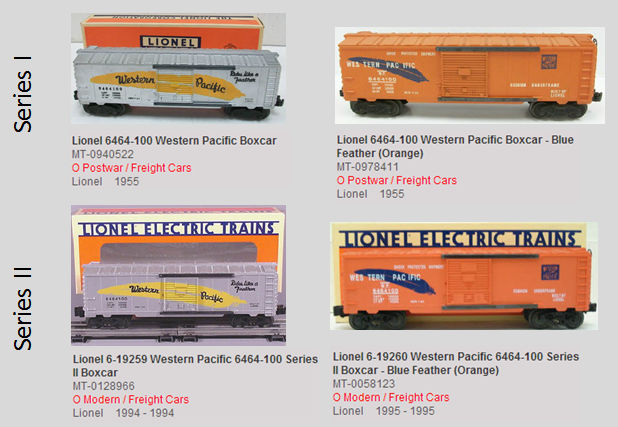Naming Guidelines
Naming Guidelines
Collector-ModelTrains is a great resource for train collectors. Its community-maintained Catalog is accurate, consistent and well-structured. There ARE errors and omissions for sure, but every day the catalog gets better and better. We have experts "curate" the Catalog, but the lifeblood of the Catalog is the contributions by the user community.
We have defined an item naming methodology to help users most easily identify and find the item they are looking for. We strive for consistency and to work well with search both internally on the site as well as from external search engines. There is no industry standard, so these guidelines are intended to help collectors correctly identify trains, as well as provide the most efficient way to find trains using a search.
Besides reading these guidelines, please take a few minutes to look over existing listings in the catalog to get a better feel for the structure and syntax of the listing titles. You’ll find that the system is easy to catch on to.
It is very important for you to try to follow these guidelines when you are adding to or editing the Catalog!
Note: We promise you will see numerous errors and inconsistencies in the naming when compared to these naming guidelines. With countless listings to maintain, we can simply say we are doing our best. If you see errors or inconsistencies, please correct them!
The Basics
Here is the basic formula for naming an item in the DASH Catalog. Put the manufacturer first, followed by the exact model number, then the road name, then the scale (if appropriate*), then the particular type of car, then the general type of the car, and finally the road number of the car, starting with a “#”, if it is different than the model number. If there is a obvious variation (e.g. color), please append a dash and describe the variation.
[Manufacturer] [Model Number] [Road Name] [Scale (if needed)] [Type of Car] [General Type of Car] [# Road Number] [- Variation (if needed)]
Consider this example using the Lionel 6464-100 Western Pacific Boxcars. There was an original issue in 1955 of two boxcars. There was a Series 2 release of these cars in 1994/95. The Series 2 cars had different manufacturer's numbers. Below, you can see how these four cars are named in the DASH Catalog.

A list of the typical types of items used in the Catalog are:
- Electric Locomotive
- Diesel Locomotive
- Steam Locomotive
- Baggage Car
- Box Car
- Coach Car
- Commuter Car
- Passenger Car
- Reefer Car
- Stock Car
- Tank Car
- Caboose
- Hopper
- Tender
NOTE: Please DO NOT USE ALL UPPERCASE (even if that's how it is printed on the packaging. Just makes us think everyone's yelling!)
Special Cases
Notes on how to handle special cases or circumstances:
- When you know the original box designated this item as "Undecorated," then note this distinction as you would a variation. In other words, append a dash and "Undecorated" to the regular item name. Here is an example, "Atheran G9001 USRA HO Scale 2-8-2 Steam Locomotive - Undecorated".
- Many times (specifically with postwar Lionel models), manufacturers associated the model number with the road number (the identification number on the side of the locomotive or freight car). However, with modern models, the road number is rarely used as the product number (or the product number involves the road number but adds prefixes and/or other numbers and letters). Be careful not to use the road number as a product number, especially if you know that your item’s manufacturer used a different numbering system. For example, any Lionel MPC or modern trains, all MTH trains, and all K-Line use numbering systems that often have nothing to do with the road number on the car. Handle this case by placing the road number of your specific item at the end of the title. For example, "MTH 20-2155-1 Canadian National SD70 Diesel Locomotive w/PS1 #5625".
- When the manufacturer and/or product number are unavailable to you, you can use the road number as the model number in the name. Before you move on though, please do an web search using whatever other information that is available to you (manufacturer, gauge, road number) to confirm the identity of your item.
- Use the same basic system when naming items that are not actually trains. There may be less information in the title, but the same concepts apply. Manufacturer, product number, scale (if applicable) and the item name make up the title. For example: Aristo-Craft 29101-69 Loop/Hook Couplers. When a single complete product has multiple items within the package, append the number of items in the package at the end of the name in parentheses. For example, Aristo-Craft 29101-69 Loop/Hook Couplers (2) or McHenry Couplers 250 HO Knuckle Spring Lower Shelf AAR Couplers (25).








